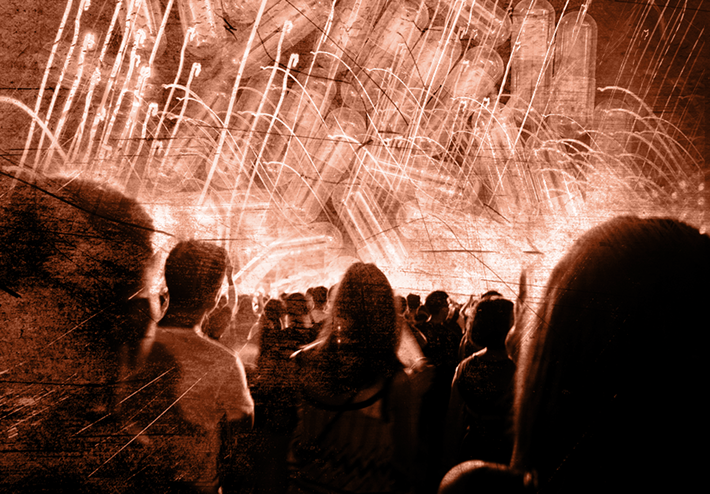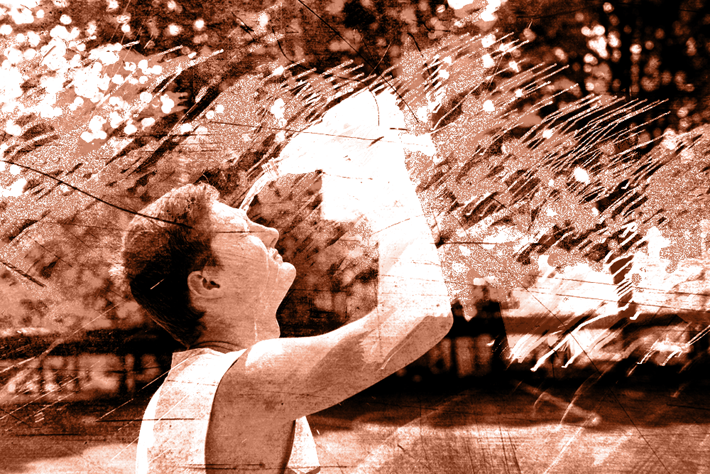What Does Molly Do?

Molly is a crystalline form of the drug MDMA, a strong stimulant often used at parties, nightclubs and music festivals. As a stimulant, it gives people the energy to dance for hours or party the weekend away.
MDMA is classified as an entactogen or empathogen. This is a type of drug that artificially increases feelings of “oneness” and emotional connection with others. In a party environment, the Molly user feels like dancing and communicating and loves being touched. This person may feel that he (or she) loves each new person he meets, including new sexual partners. But this feeling will last no longer than the drug lasts.
Molly was introduced a decade or so ago as a purer form of Ecstasy, a drug that some people think is safe to use. When Ecstasy began to be adulterated with a long list of other drugs and many users had terrible reactions, MDMA users looked for a solution. A crystallized form of the drug seemed like the answer and many people began to look for Molly instead of Ecstasy. But of course, samples of Molly sent for analysis also showed that sometimes they contained MDMA, sometimes they contained none.
A Look at What Molly Does to the User’s Brain
Molly has a dramatic effect on serotonin levels in the brain. Serotonin is a neurotransmitter, a substance in the brain that enables the transmission of signals from one nerve to another. Serotonin helps regulate the brain’s functions related to:
- Sleep
- Appetite
- Pain
- Aggression
- Anxiety
- Memory
- Perceptions
- Mood
Using Molly forces the release of high levels of serotonin and disables the brain from reabsorbing this chemical after it is released. So these high levels last for hours. During this time, the user does not want to sleep or eat. His perceptions are dramatically different. Music will have a profound effect and the user may feel driven to dance at length. Changing lights are alluring which is why people at raves and music festivals enjoy light shows so much or wave light sticks or wear lighted necklaces.
Using Molly is referred to as “rolling.” The high from Molly lasts four to six hours, so to keep partying, a person will take more doses, referred to as “bumps.” If a person takes multiple doses at one time, this is called “stacking.”
Other Effects of Molly

Of course, not all the effects are pleasant ones. Use of Molly can be associated with the following adverse effects:
- Agitation
- Increased heart rate
- Clouded or disorganized thinking
- Sweating
- Headache
- Panic attacks
- Muscle spasms (including teeth clenching)
- Overheating
- Seizures
Overheating or hyperthermia occurs because the brain is not able to regulate the body’s temperature effectively. Combine this with hours of dancing, especially at a hot, outdoor music festival, and fatal effects can result. MDMA or Molly users have been rushed to hospitals after collapse at these venues. Their body temperatures measure as high as 108 degrees. Organ breakdown quickly results in death.
What are the Symptoms of Using Molly?
There are short-term symptoms and long-term symptoms. About 45 minutes after taking a dose of Molly, these symptoms will show up:
- Sense of well-being
- Increased interest in others
- Heightened emotions and empathy
- Interest in communicating emotional topics and memories
- Changes in sensory perception, especially related to light, sound and touch
After bingeing on this drug and then discontinuing use, a specific set of symptoms will show up, including:
- Depression
- Impaired memory
- Aggression
- Irritability
- Lethargy
- Anxiety
- Fatigue
- Decreased motivation
- Disinterest in food
This “comedown” can be so severe that suicide is a possibility. A 2011 study found a strong association between MDMA use and subsequent suicide among teens in the United States.
Continued or regular Molly use can seriously affect one’s outlook and even the functioning of one’s brain. These changes relate to the depletion of serotonin in the brain. The long-term symptoms of Molly use include:
- Impulsivity
- Depression
- Agression
- Reduced ability to feel pleasure
- Concentration difficulties
- Decreased cognitive function
One study found that even two years after stopping MDMA use, former users’ brains had not returned to normal. And the more MDMA these users had consumed, the more their brains diverged from normal function.
How to Tell if Someone is On Molly
When a person is using Molly, you should look for these signs:
- Odd sleeping patterns
- Not noticing pain or injuries
- Involuntary teeth clenching leading to jaw pain
- Having or using a baby’s pacifier, a mouthguard or gum to prevent teeth clenching
- Being overly friendly or talkative
- Being oddly attracted to tactile or audio experiences
- Time distortion
- Euphoria
- Unusual level of confidence and excitement
- Being sweaty or overheated
- Aggressive behavior

Addiction to Molly
Of course, one of the long-term effects of using Molly is addiction. Some people claim that the drug is not addictive because when a person stops using it, they do not go through severe withdrawal symptoms like a person might if he stops drinking alcohol.
But there are definitely signs that Molly addiction is possible. After using Molly for a while, users develop a tolerance, meaning that they must take more of the drug to get the effect they are looking for. Severe cravings for more of the drug drive some people to use it again and again, even though they have noticed that their lives or their thinking are being damaged. This is another sign of addiction.
People going through withdrawal from Molly addiction are likely to manifest loss of appetite, depression, fatigue, difficulty concentrating.
When a person loses control of their use of a drug and when they keep using it even through their relationships, careers, studies and health are being harmed, they can be considered addicted. The right path out of addiction is finding the right drug rehabilitation program to help them build a new, productive and satisfying life.
 ®
®